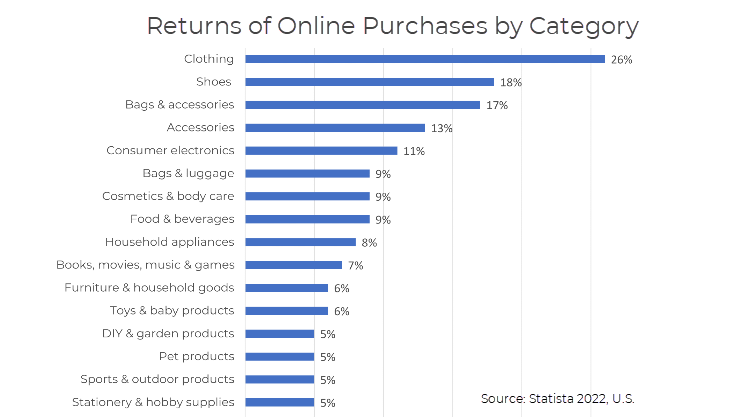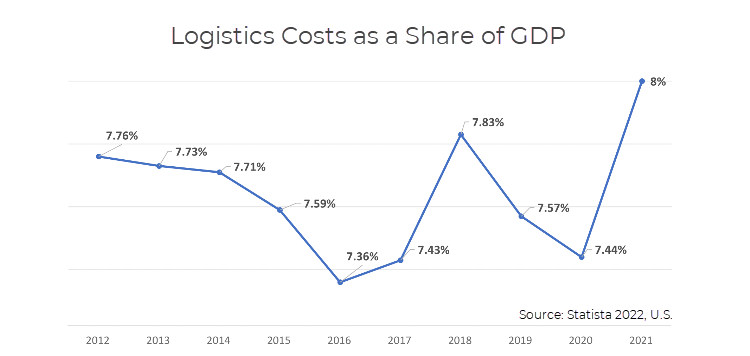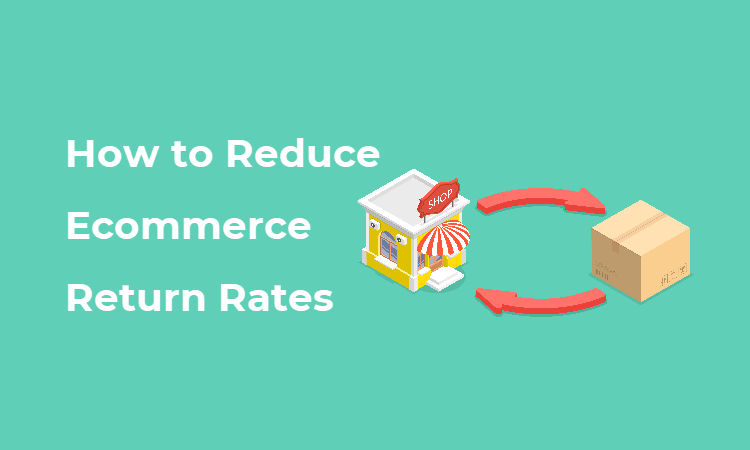Ecommerce retail returns have increased since the start of the pandemic, keeping pace with the remarkable growth of online sales. However, with growing return rates, retailers face the growing challenge of maintaining profitability without alienating their customer base.
This article will examine what return rates are, how they work, and some proven strategies for reducing them.
Return Rate Definition
A return rate refers to the percentage of products customers return to an ecommerce store. Customers usually return goods due to a defective or damaged product, they received the wrong item, or they changed their mind about the purchase.
Return rates significantly impact profits and are a crucial ecommerce KPI. A high return rate may indicate issues with product quality or inaccurate product descriptions. Tracking return rates over a period can identify trends and potential problems.
How to Calculate Return Rate
To calculate the return rate for a business, divide the number of returned items by the total number of sold items, then multiply by 100 to get a percentage.
Here is the formula to calculate your return rate:
Return Rate = (returned items ÷ sold items) x 100
For example, a store sold 100 items in one month, and customers returned 10. To calculate the return rate, we divide ten by 100 and then multiply by 100 to get a return rate of 10%.
Return Rate = (10 ÷ 100) x 100% = 10%
What are Average Ecommerce Return Rates?
Return rates are rising as online shoppers become used to try-before-you-buy programs and buying items in more than one size or color only to return unwanted merchandise.
The total value of retail returns in 2022 increased by 2.8% to $613 billion, comprising 8.6% of the overall retail sales for the year. According to projections by Insider Intelligence, in 2023 there will be a 2% yearly rise in retail returns, reaching a total of $627 billion.
The consequence of this is that some online retailers are scaling back their lenient return policies, with 25% retailers in the U.K. now charging customers for returns.

Why Is It Important to Reduce Ecommerce Return Rates?
Here are several benefits of reducing return rates:
- Cost savings. Over the past three years, the rise in shipping and logistics costs has exceeded the growth in manufacturing. Reducing return rates saves businesses money on shipping, restocking, and processing returns.
- Customer satisfaction. High return rates are a reliable sign that customers are unsatisfied with your product or service. By lowering return rates, you reduce churn, retain more customers and turn them into advocates of your brand.
- Better inventory management. High return rates can result in excess inventory and inefficient inventory management. By reducing return rates, businesses ensure they stock the right products in the correct quantities.

Reasons for Ecommerce Product Returns
The key to preventing product returns is understanding why they happen in the first place.
Here are the main reasons behind product returns:
- Products not meeting expectations. One of the main reasons for product returns is the disparity between the product images and descriptions and the delivered product. To avoid this, provide comprehensive product descriptions alongside clear and true-to-life photos and videos.
- Irrational customer behavior. Customers may make irrational and impulse purchases, often resulting in returned products. Additionally, offering free shipping on returns sometimes encourages customers to purchase items in multiple sizes or colors and return the ones they do not like.
- Absence of sizing charts. Clothing and footwear are the most frequently returned products, often due to customers choosing the wrong size. Proper measurements and interactive sizing charts can dramatically reduce the rate of returns for clothing items. Apart from providing an interactive size guide, fashion retailers could also offer customers an instructional video demonstrating how to accurately measure themselves to determine the ideal size.
- Delivery of wrong goods. Another common reason for product returns is customers receiving the wrong product due to merchant error. To prevent this, stores should improve their customer fulfillment process.
- Return fraud. Fraudsters sometimes abuse the return system by returning stolen goods to receive money, stealing receipts or receipt tape to facilitate a fraudulent return, or using another person’s receipt to return an item taken from a store shelf.

Note: Stay ahead of fraudsters with our guide on the best practices of ecommerce fraud prevention.
7 Ways to Reduce Ecommerce Return Rate
Before implementing unpopular measures such as charging for returns, merchants should carefully examine what they can do to prevent them occurring in the first place. Here are seven proven ways of reducing your store’s return rate:
1. Accurate Product Descriptions
Clearly communicate how the product looks and feels to minimize customer confusion and future disappointment. This will reduce the likelihood of returns due to customer misunderstanding.
By providing detailed and accurate descriptions, high-quality images, and videos, you can help customers make more informed purchasing decisions. Remember, when customers receive a product that matches their expectations, they are less likely to initiate a return.
Furthermore, enriching product content with video is an effective way to increase ecommerce sales, reduce return rates, and improve the customer experience. Videos can show the product in use or different contexts and highlight any special care or maintenance instructions, which helps to prevent damage or misuse of the product.
2. Customer Reviews
Customer reviews are vital in ecommerce, with nearly 70% of consumers relying on product reviews to decide on a purchase. As a result, they are no longer an optional feature but a necessary component of the shopping experience.
To maximize the benefits of customer reviews, especially for fashion apparel retailers, it is helpful to include fields such as height, weight, body type, and size and offer filters for these criteria. Offering filters helps shoppers quickly narrow their search and find products better suited to their unique needs and preferences.
Including these fields in customer reviews increases the business’s trustworthiness and transparency and reduces the likelihood of returns or negative reviews due to incorrect sizing or fit issues.
Note: Do not depend solely on freely offered reviews. Merchants who actively seek customer feedback find they can respond to buyers needs and improve their offerings.
3. Precise Delivery Estimates
Realistic and accurate delivery estimates reduce return rates by ensuring customers don’t become frustrated and disappointed by late deliveries.
If the delivery estimate is too optimistic, and the product arrives late, the customer might not have the same need for it as when they ordered it, leading to a return. Conversely, customers with a clear idea of when their product will arrive are less likely to cancel their order due to delivery anxiety.
Finally, when customers receive their product on time or earlier than expected, they are more likely to be satisfied with their purchase and less likely to request a return.
4. Allow Online Orders to be Returned to Physical Stores
Allowing customers to return online orders to physical stores can have several advantages.
- Cost savings. By allowing customers to return items to a store, retailers can save on shipping items back to a warehouse or distribution center.
- Increased foot traffic. Customers coming to the store to return an item, may also make additional purchases, increasing foot traffic and sales
- Opportunity for upselling and cross-selling. While the customers are in the store, associates can offer them alternative products, leading to upselling and cross-selling opportunities.
- Improved customer experience. Offering in-store returns can simply be more convenient and faster for customers. They can just walk into a store and return the item without waiting for shipping or worrying about the item getting lost in transit.

Note: Representment is essential to effectively fight against chargebacks and protect your revenue.
5. Use Ecommerce Returns Solutions
Returns management software is an absolute must for any store with a large volume of orders, as it significantly reduces the time spent processing returns.
Without automation, customers must contact the store and complete a form to initiate a return. After that, the customer support team must create a return label and send it to the customer. This process is inefficient and costly, requiring multiple rounds of communication before the customer returns the item.
Ecommerce returns management tools streamline the returns process. Some solutions offer more advanced return policies for retailers and customers.
Here are some well-known returns solutions:
- ReturnLogic simplifies the entire returns process by providing customizable workflows that automate tasks such as printing shipping labels, tracking return shipments, and inventory management. Additionally, they offer warranty processing to accept claims from third-party purchases, insights and analytics, and a customizable return portal that makes it easier for customers to return products.
- Returnly allows online store owners to create personalized return portals to improve the customer experience and make returns more straightforward. In addition to a user-friendly return portal, Returnly provides automation rules allowing you to manage how and when returns are processed.
- Loop Returns enables online retailers to create a return portal that automates workflows, simplifies the returns process, and provides feedback forms to gather useful information on why customers return products.

Note: If a customer is dissatisfied with a product and the merchant refuses to give them a refund or exchange, they may initiate a chargeback .
6. Outsource Reverse Logistics
Reverse logistics moves goods from customers back to sellers or manufacturers. The reverse logistics process encompasses several activities, including collecting, inspecting, and sorting products, as well disposing of them if they cannot be resold.
Due to a rising number of product returns and a greater focus on environmental concerns and legislation, reverse logistics has become increasingly important for smaller businesses with big shipments.
Outsourcing reverse logistics can be beneficial for businesses in several situations:
- Lack of expertise. Outsourcing to a third-party provider can be a good option if a business lacks expertise in handling reverse logistics. Reverse logistics are complex and involve multiple processes, so an experienced provider can bring the necessary knowledge and skills to manage these processes efficiently.
- Limited resources. Businesses with limited warehouse space, equipment, and personnel, may find it challenging to handle reverse logistics in-house. Outsourcing solves this problem by providing access to the provider’s network of warehouses, personnel, and technology.
- Scalability. Companies that experience seasonal or fluctuating demand for their products may find it challenging to scale their reverse logistics operations accordingly. Outsourcing provides the flexibility needed to adjust to changing demand, as providers can quickly ramp up or down their services.
- Cost-effectiveness. Outsourcing reverse logistics can be cost-effective for businesses that do not have the scale or volume to justify investing in the necessary resources and infrastructure.

Note: Find out how outsourcing accounts payable process can save your business time and money while improving accuracy and compliance.
7. Define a Clear Return and Refund Policy
Customers are not looking for an incredibly forgiving return policy, but rather, they want assurance that the store has a transparent process for handling returns and refunds.
A clear refund policy offers a unique opportunity to prevent costly misunderstandings and attract customers. The policy must be easily accessible, understandable, and without unnecessary legal jargon to curate returns and make a positive impression on customers.
A well-defined return policy should include the following elements:
- The time frame for initiating a return. For reference, the standard return period is 30 days.
- A detailed process, method, and timeline for refunds. For example, the policy should be upfront about offering in-store credit instead of complete refunds. However, recognize that graciously responding to refund requests increases sales and long-term business success.
- Information about who is liable for return shipping, restocking, and any additional costs. Nobody likes hidden fees, and if your store doesn't clarify them in the policy, you risk agitating customers. For additional transparency, include a formula for calculating return fees.
- Clearly defined requirements for accepting returns as well as any restrictions or exceptions. Outline whether customers must include the original packaging, authorization number, or proof of purchase with the return. Emphasize what is not acceptable when returning products.
Conclusion
When dealing with product returns, it’s important to stay levelheaded and remember that profitability is the end goal. Therefore, sometimes a higher return rate is worth it if it allows your store to build brand loyalty and drive recurring revenue .
Handling returns quickly and graciously results in a positive experience for the customer, increasing the likelihood that they will become repeat customers . A generous return policy also signals that your product is high-quality and that you trust your customers and value their time.
However, getting too many product returns will start to eat into a business’s margins and revenue. That is why merchants must understand the reasons behind returns and implement steps to reduce return rates while keeping customers happy.
